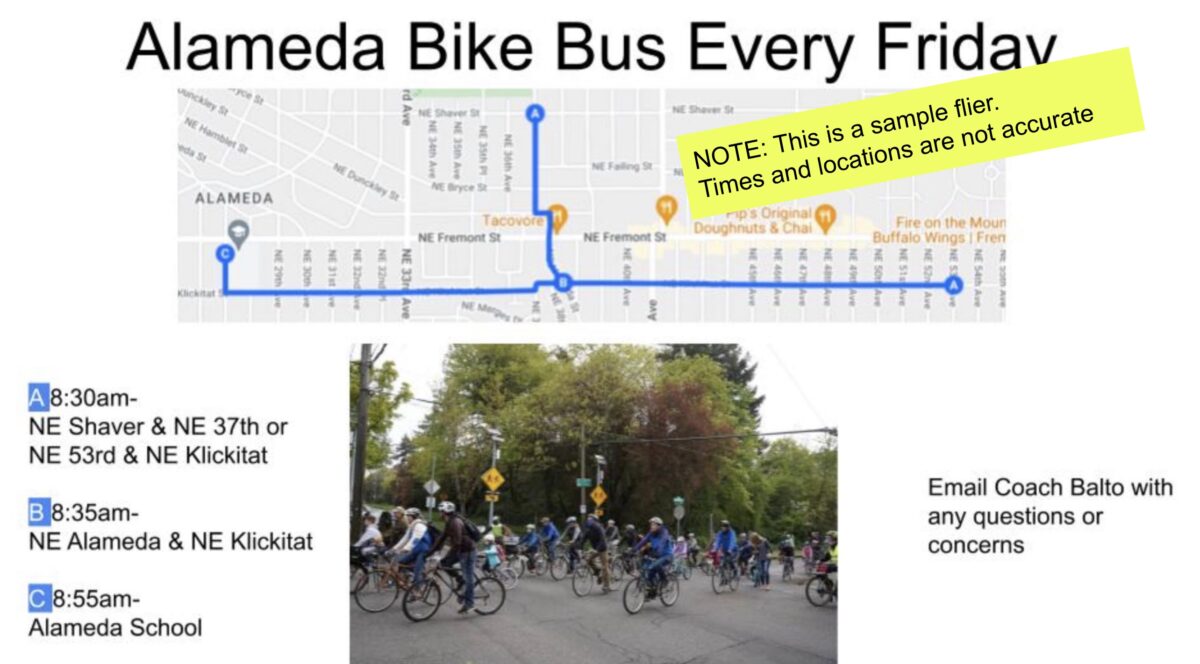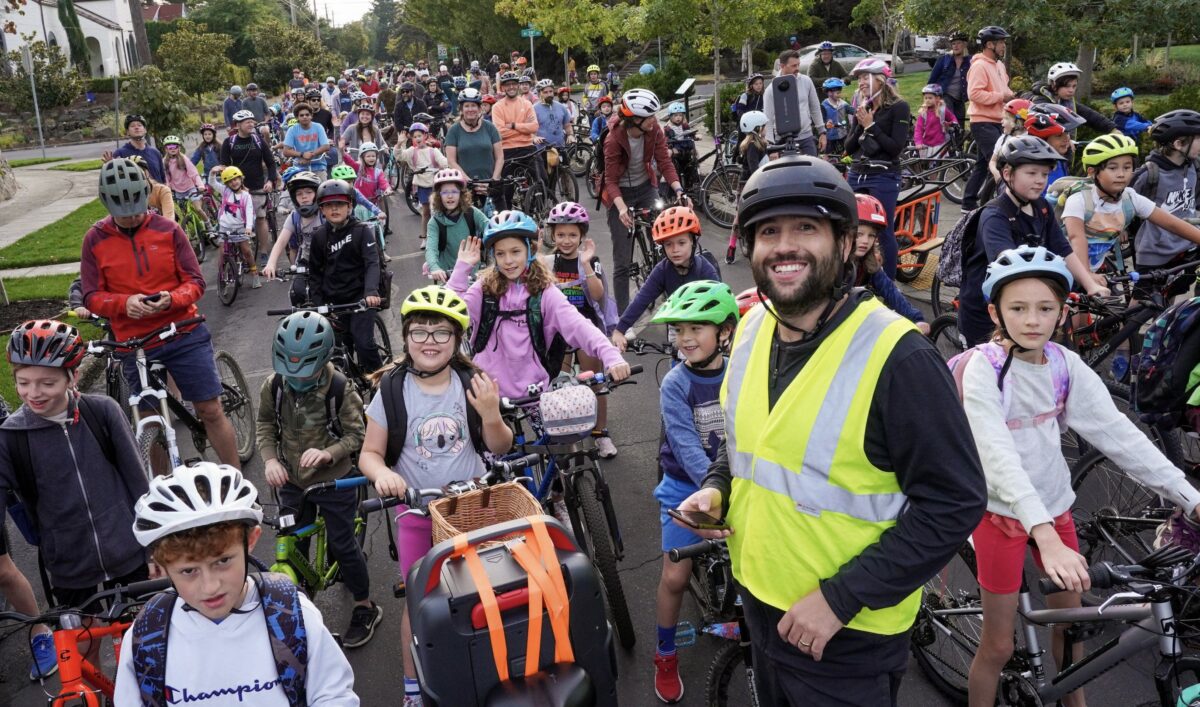 Sam Balto at the front of the bus on September 21st, 2022. (Photo: Jonathan Maus/BikePortland)
Sam Balto at the front of the bus on September 21st, 2022. (Photo: Jonathan Maus/BikePortland)
Sam Balto is a serial safe streets entrepreneur. His first claim to fame was using cardboard cutouts of football star Tom Brady to slow traffic down outside a school he taught at in Boston, Massachusetts. Then, after he moved to Portland in 2018, Sam’s tactical urbanism went to the next level with the “Red Cup Challenge.” Both of these DIY traffic-taming tactics garnered national media attention.
But nothing Sam’s ever done has taken off like the bike bus. What started as a way to get kids active (he’s a physical education teacher) before school on Earth Day back in April, has become a viral phenomenon. A TikTok video he posted this week has over 1.5 million views.
Sam wants more people to hop on the bus. So before he stops taking my calls, I asked him to lay out all his secrets.
Take it away Sam…
The question you need to ask is: why do you want to start one? There are two reasons why you ask this question. First, it helps you focus on the problem you are trying to solve. And second, it helps to remember why you started in the first place when things get frustrating or it’s the middle of the winter and the weather isn’t as pleasant.
My “why” changes depending on the school I have worked at. At Cesar Chavez Elementary School in north Portland my “why” was to build a strong community and revitalize a walking school bus program that had existed in the past. I wanted to provide children more opportunities for physical activity and to support students who didn’t qualify for the bus and didn’t have someone who could take them to school. At Alameda, my “why” to start the bike bus was to reduce car trips at drop-off, which had gone way up during the pandemic because of canceled bus routes.
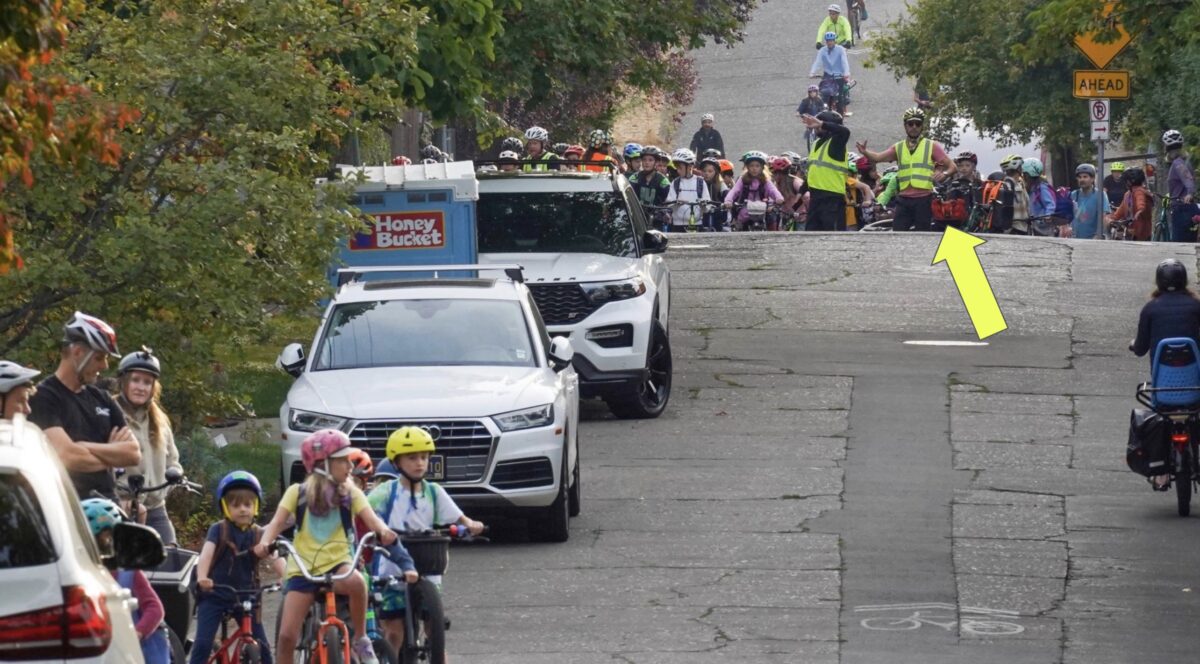 My friend Paul (yellow arrow) helps me corral the crowd. (Photo: Jonathan Maus/BikePortland)
My friend Paul (yellow arrow) helps me corral the crowd. (Photo: Jonathan Maus/BikePortland)
Once you know your “why,” you should start finding allies. This work shouldn’t be done alone, so find someone who shares your interest in starting a bike bus. I found other champions by hanging out by the bike rack before and after school and talking to parents who were biking with their children. I shared the idea of a bike bus and asked if they wanted to help.
Once you have your team, it’s time to plan the route.
 Alameda Elementary catchment zone.
Alameda Elementary catchment zone.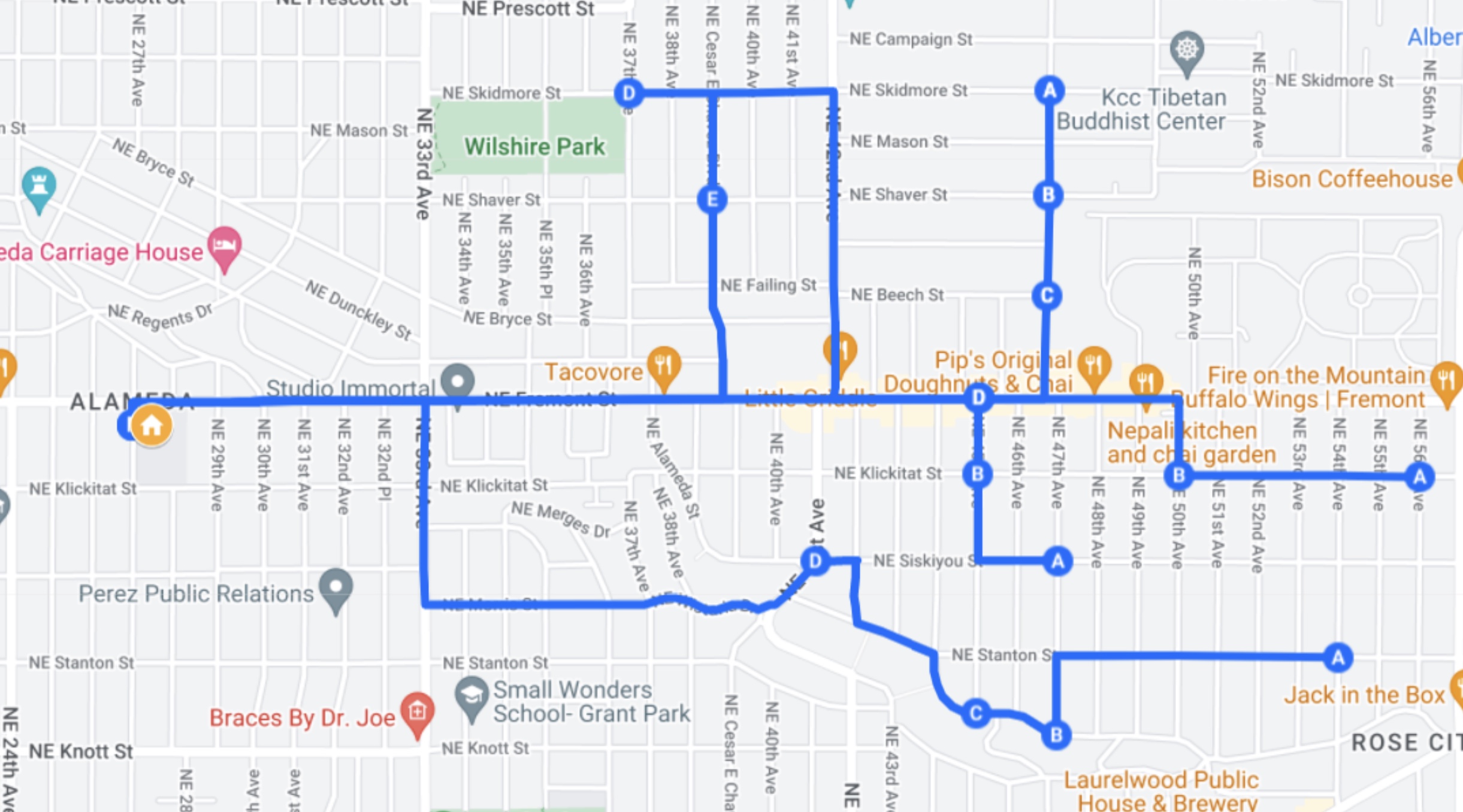 Motorized yellow school bus routes.
Motorized yellow school bus routes.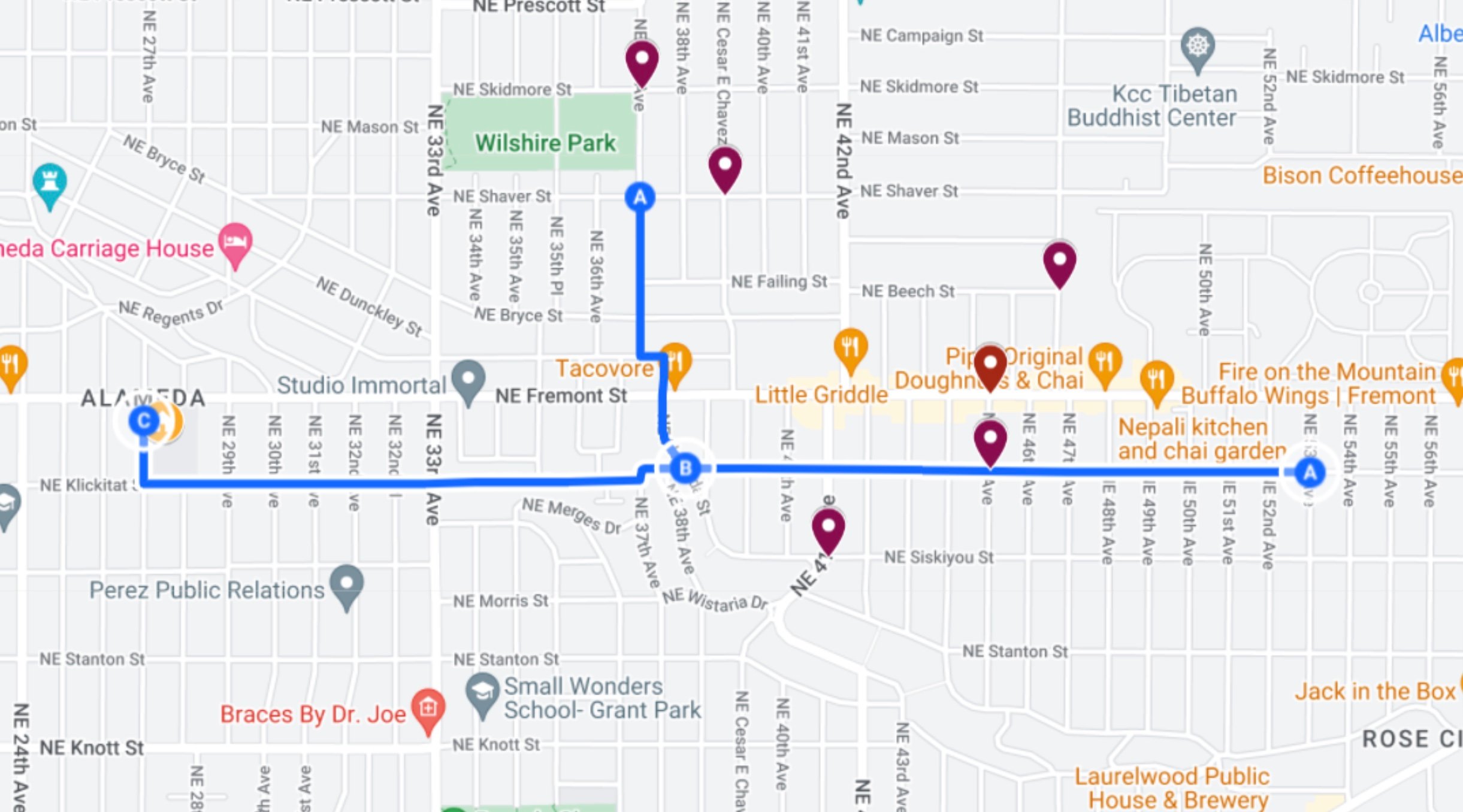 Our bike bus route with school bus stops marked.
Our bike bus route with school bus stops marked. Student home addresses and the bike bus route.
Student home addresses and the bike bus route.First, find out the catchment zone for your school. Then find the official bus route information. Some school districts have bus routes on the school transportation website and they’re usually easy to find. I take that information and put the bus stops into Google Maps Layers. This gives me an idea where students live and where students take the bus from.
I then mark which bus stops are between 1 – 1.25 miles from the school. These bus stops are bikeable and walkable. If you are a school administrator or staff member, some school districts have lists of which students should get on at each stop. This list gives you great information for families to reach out to and invite to your bike bus or walking school bus.
In Portland we have neighborhood greenways which are the preferred routes for bicycling and walking. They have speed bumps, lower speed limits (20 mph citywide), signage and often traffic diverters to reduce the amount of cars on the road. For our school we have the NE Klickitat greenway that runs east-west and NE 37th/Alameda greenway that runs north-south.
In one of the maps above you can see how student addresses line up with our route. Note how many families live just a few blocks from the bike bus. Families that live four blocks or more from the two main meeting spots have created micro bike buses and they bike together to the main route. Many other families know the route and they just wait on the nearest corner and join us as we roll by.
Our first bike bus ride had a simple route that only used one street (NE Klickitat). That helped establish it, but when we decided to continue the bike bus every week for the rest of the school year, we added another meeting location to include families that live north of NE Fremont, a major arterial.
Once you have a route and meeting times, make a flier and share it with everyone. In 2008 I worked for the Obama campaign in Northeast Pennsylvania. I registered over 2,000 college students and I take that same mindset when talking to people about the bike bus. I will talk to anyone and everyone about the bike bus! Even if they drive every day I still invite them and make sure they feel welcome to join us.
I hope this was helpful. To review, here are the four most important things to remember:
Find another family to do it with. Make a map with meeting times and share it with everyone. Be inclusive and welcoming. Be consistent. Our bike bus has had consistent growth because we are consistent and students/families can plan for it. Just do it. Even if it’s a three-block ride, that is amazing. You have to start somewhere and build support.Good luck!
For more information, check out these helpful resources:
![]()
Sam Balto is a northeast Portland resident who teaches physical education at a local public school. In 2019 he was honored with a Weston Award from Oregon Walks for his school-based traffic safety advocacy. Follow him on Twitter at @CoachBalto.

